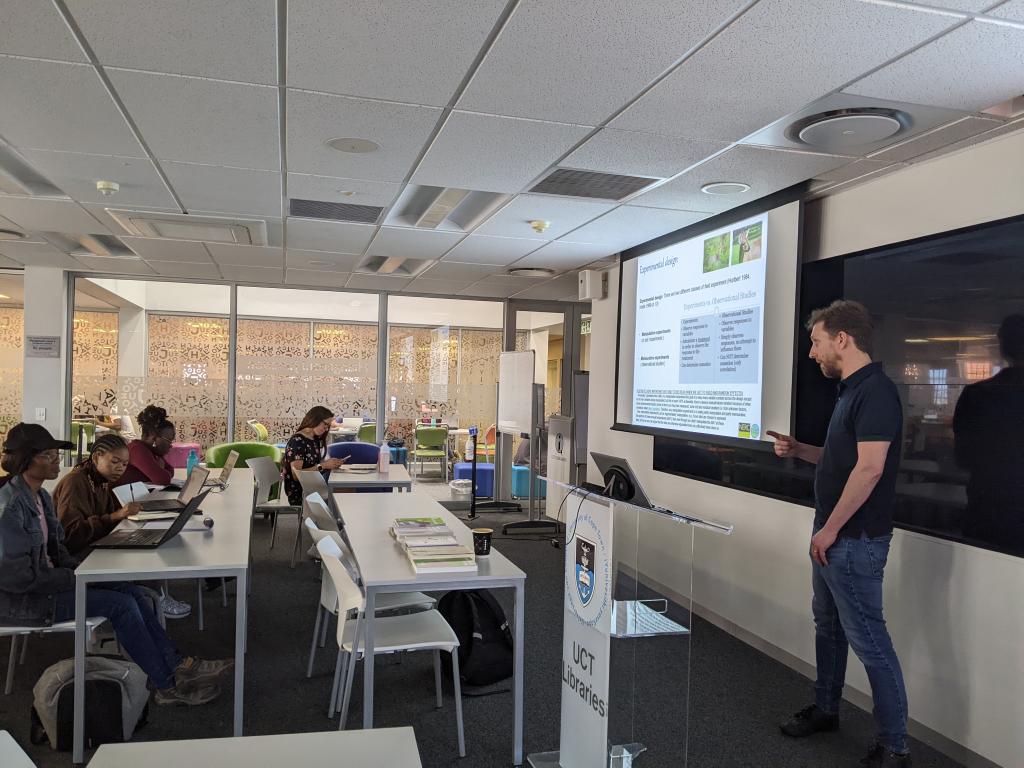Experts lead webinar on land surface modelling for nature-based solutions

Environmental scientists Dr Assumpta Onyeagoziri and Dr Petra Holden working on the TES NbS project at the African Climate & Development and Dr Toby Marthews from the UK Centre for Ecology & Hydrology (UKCEH), recently spearheaded a webinar introducing state-of-the-art land surface modelling methodologies and their relevance to nature-based solutions.
"Nature-based solutions are an absolutely essential part of Africa’s response to the all-embracing challenge of climate change, so being able to assess and predict their effectiveness is going to become ever more essential moving forward into the future," explains Dr Toby Marthews.
The webinar, which took place on 1 March 2024, aimed to elucidate the complex methodologies involved in land surface modelling and how they can be effectively utilized in the realm of nature-based solutions. The event was open to researchers, policymakers, and practitioners keen on delving into trying to use this tool to track and understand nature-based solution impact. Notably, no prior modelling knowledge or experience was required, making it accessible to a diverse audience.
“Collaborations such as these help us to use and improve existing models so that they adequately reflect southern African ecosystems and processes. This means we can use them to answer questions and create knowledge to influence important policies relating to nature-based solutions,” emphasised Dr Petra Holden.
The Importance of Land Surface Modelling
Land surface models use quantitative methods to simulate the exchange of water and energy fluxes at the Earth surface-atmosphere interface. They are a key component of earth system models, playing a crucial role in understanding and predicting the effectiveness of nature-based solutions.
The webinar highlighted the importance of land surface modelling for quantifying the impact of nature-based solutions. Researchers can gain valuable insights into the efficacy of nature-based interventions using land surface models.
Dr. Marthews and Dr. Onyeagoziri provided invaluable insights into the utilization of land surface models for modelling spatial impacts, particularly focusing on tracking the role of nature-based solutions in addressing certain societal challenges.
“Land surface modelling is essential for assessing the trade-offs and synergies of nature-based solutions for climate change adaptation and mitigation. It’s not just about studying the Earth’s surface, it's about using the knowledge to make a meaningful change,” explains Dr. Assumpta Onyeagoziri.
Hybrid Training Workshop
The webinar served as a precursor to a hybrid training workshop, emphasising the pivotal role of gridded and spatial data in assessing nature-based solutions effectiveness.
Dr. Marthews introduced Generalised Linear Models (GLMs), to support participants in their own work related to predicting NbS effectiveness. Topics ranged from recapping GLMs for modelling point data to more advanced topics such as spatial GLMs to predict soil erosion in southern Africa. This was demonstrated using the Limpopo River as a case study. The workshop also highlighted NetCDF's utility for gridded data manipulation, offering practical R-based visualisation demonstrations. Attendees gained both theoretical understanding and applicable practical skills.
“Participants responded very positively to the workshop, expressing that it was a great introduction to gridded data and spatial GLMs. I think the information shared will be a valuable resource to their work in the future,” explains Michelle Shields, TES NbS communications officer.
The webinar and workshop aimed to provide insight into a growing aspect of evaluating the success of nature-based solutions for addressing various societal challenges in a changing climate.